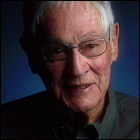 Bradford A. Smith, a research astronomer and former professor of planetary science and astronomy at the University of Arizona, dies at the age of 86 from complications arising from an autoimmune disorder. Smith became a public figure during the peak years of the uncrewed Voyager missions in the 1970s and ’80s, where, as the head of the imaging team for Voyagers 1 and 2, it fell to him to interpret freshly-received images from the outer planets and their moons for the press and the public, combining authoritative knowledge with a dry sense of humor at press conferences. Smith had reshaped the specs for Voyager’s onboard cameras since the mission was given the go-ahead in 1972, not only pushing for more powerful telescopic optics, but going out of his way to hire geologists and planetary science experts who could interpret the geological processes shaping the moons of Jupiter, Saturn, Uranus and Neptune from photos alone. When the moons of Jupiter greeted Voyager’s cameras with recently-reshaped surfaces and active volcanoes, that decision paid off. Prior to the Voyager mission, Smith had also been involved with imaging science in the Mariner and Viking missions to Mars, as well as helping to shape the specs for the planetary camera being developed for the yet-to-be-launched Hubble Space Telescope and advising imaging teams working on later missions.
Bradford A. Smith, a research astronomer and former professor of planetary science and astronomy at the University of Arizona, dies at the age of 86 from complications arising from an autoimmune disorder. Smith became a public figure during the peak years of the uncrewed Voyager missions in the 1970s and ’80s, where, as the head of the imaging team for Voyagers 1 and 2, it fell to him to interpret freshly-received images from the outer planets and their moons for the press and the public, combining authoritative knowledge with a dry sense of humor at press conferences. Smith had reshaped the specs for Voyager’s onboard cameras since the mission was given the go-ahead in 1972, not only pushing for more powerful telescopic optics, but going out of his way to hire geologists and planetary science experts who could interpret the geological processes shaping the moons of Jupiter, Saturn, Uranus and Neptune from photos alone. When the moons of Jupiter greeted Voyager’s cameras with recently-reshaped surfaces and active volcanoes, that decision paid off. Prior to the Voyager mission, Smith had also been involved with imaging science in the Mariner and Viking missions to Mars, as well as helping to shape the specs for the planetary camera being developed for the yet-to-be-launched Hubble Space Telescope and advising imaging teams working on later missions.
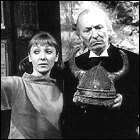 The 78th episode of Doctor Who airs on the BBC. This is part one of the story now collectively known as The Time Meddler. This is the first time we meet another one of the Doctor’s people, with his own TARDIS, and the last Doctor Who story to be produced by the series’ original producer, Verity Lambert.
The 78th episode of Doctor Who airs on the BBC. This is part one of the story now collectively known as The Time Meddler. This is the first time we meet another one of the Doctor’s people, with his own TARDIS, and the last Doctor Who story to be produced by the series’ original producer, Verity Lambert.
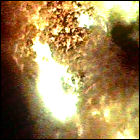 The Soviet Union’s second attempt to launch its moon rocket, the huge N1, ends disastrously. Again carrying an unmanned Zond spacecraft, the N1 barely clears the tower before stalling. Still full of highly flammable fuel, the N1 drops back to the ground, resulting in one of the most powerful man-made, non-nuclear explosions in history, completely wiping its launch tower and adjacent buildings off the map. (The Zond probe is lifted clear of the explosion by its escape rockets.) American spy satellites spot the damage to the nearby landscape from the explosion, tipping off the rest of the world to the N1 rocket program.
The Soviet Union’s second attempt to launch its moon rocket, the huge N1, ends disastrously. Again carrying an unmanned Zond spacecraft, the N1 barely clears the tower before stalling. Still full of highly flammable fuel, the N1 drops back to the ground, resulting in one of the most powerful man-made, non-nuclear explosions in history, completely wiping its launch tower and adjacent buildings off the map. (The Zond probe is lifted clear of the explosion by its escape rockets.) American spy satellites spot the damage to the nearby landscape from the explosion, tipping off the rest of the world to the N1 rocket program.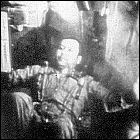 The Soviet Union launches the Soyuz 14 mission, sending cosmonauts Yuri Artyukhin and Pavel Popovich to embark on a two-week stay aboard the Salyut 3 military space station. Though some medical science experiments are performed at Salyut 3, the majority of the crew’s time is taken up with observations of the Earth’s surface, essentially making Salyut 3 the first manned military surveillance satellite. Before leaving, the crew of two offloads supplies so that the new Salyut 3 crew can stay for several months.
The Soviet Union launches the Soyuz 14 mission, sending cosmonauts Yuri Artyukhin and Pavel Popovich to embark on a two-week stay aboard the Salyut 3 military space station. Though some medical science experiments are performed at Salyut 3, the majority of the crew’s time is taken up with observations of the Earth’s surface, essentially making Salyut 3 the first manned military surveillance satellite. Before leaving, the crew of two offloads supplies so that the new Salyut 3 crew can stay for several months. Midway Games releases the arcade game
Midway Games releases the arcade game  The 21st episode of George Lucas’ historical adventure series The Young Indiana Jones Chronicles airs on ABC, starring Corey Carrier. John Wood (WarGames, Ladyhawke) guest stars.
The 21st episode of George Lucas’ historical adventure series The Young Indiana Jones Chronicles airs on ABC, starring Corey Carrier. John Wood (WarGames, Ladyhawke) guest stars.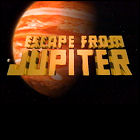 The 13th episode of Escape From Jupiter airs on the Australian Broadcasting Corporation. Co-produced by ABC and Japanese network NHK, this children’s sci-fi series stars Steve Bisley (Mad Max). The story is continued in the 1997 series Return To Jupiter.
The 13th episode of Escape From Jupiter airs on the Australian Broadcasting Corporation. Co-produced by ABC and Japanese network NHK, this children’s sci-fi series stars Steve Bisley (Mad Max). The story is continued in the 1997 series Return To Jupiter.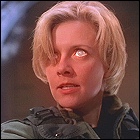 Pay cable channel Showtime premieres the
Pay cable channel Showtime premieres the 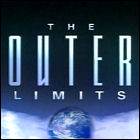 Showtime airs the 78th episode of The Outer Limits, a revival of the 1960s science fiction anthology series.
Showtime airs the 78th episode of The Outer Limits, a revival of the 1960s science fiction anthology series. British composer and musician Delia Derbyshire, probably best known for the unforgettably haunting arrangement of Ron Grainer’s Doctor Who theme music which graced the show from 1963 to 1980, dies at the age of 64. The first female composer to work in the BBC Radiophonic Workshop, Ms. Derbyshire also contributed a great deal of music both otherworldly and otherwise to the BBC’s library over the years, and remained an active participant up until her death.
British composer and musician Delia Derbyshire, probably best known for the unforgettably haunting arrangement of Ron Grainer’s Doctor Who theme music which graced the show from 1963 to 1980, dies at the age of 64. The first female composer to work in the BBC Radiophonic Workshop, Ms. Derbyshire also contributed a great deal of music both otherworldly and otherwise to the BBC’s library over the years, and remained an active participant up until her death. The
The  Bradford A. Smith, a research astronomer and former professor of planetary science and astronomy at the University of Arizona, dies at the age of 86 from complications arising from an autoimmune disorder. Smith became a public figure during the peak years of the uncrewed
Bradford A. Smith, a research astronomer and former professor of planetary science and astronomy at the University of Arizona, dies at the age of 86 from complications arising from an autoimmune disorder. Smith became a public figure during the peak years of the uncrewed 
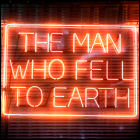 Showtime broadcasts the tenth episode of The Man Who Fell To Earth, a series continuation of the 1976 David Bowie film, starring Chiwetel Ejiofor, Naomie Harris, Bill Nighy, Kate Mulgrew (Star Trek: Voyager, Star Trek: Prodigy), and Jimmi Simpson (Westworld).
Showtime broadcasts the tenth episode of The Man Who Fell To Earth, a series continuation of the 1976 David Bowie film, starring Chiwetel Ejiofor, Naomie Harris, Bill Nighy, Kate Mulgrew (Star Trek: Voyager, Star Trek: Prodigy), and Jimmi Simpson (Westworld).